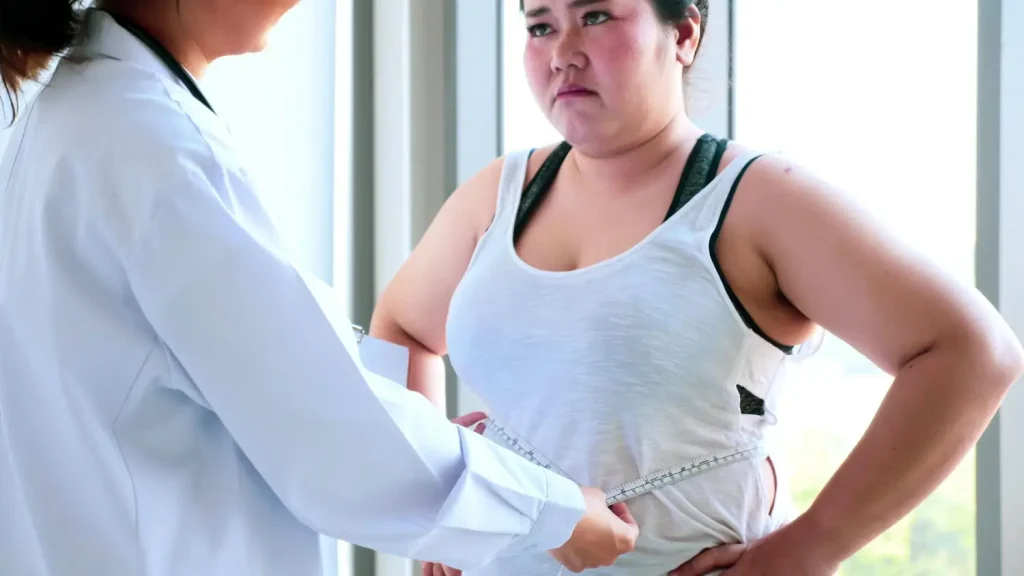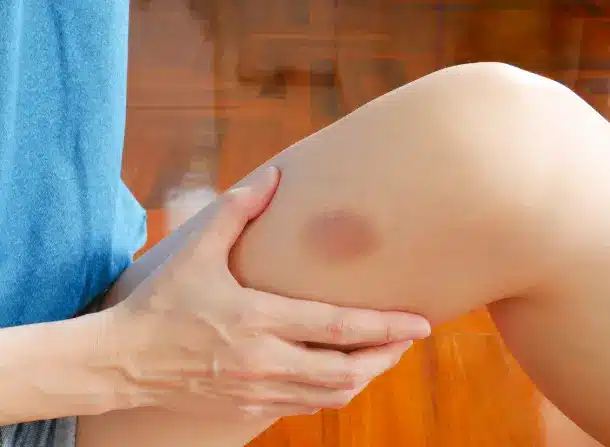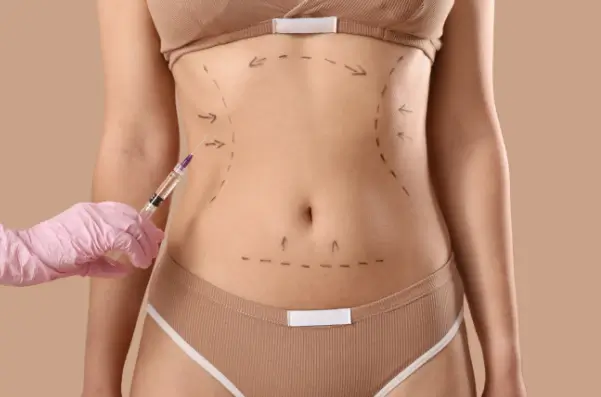A recent study revealed a startling statistic: one in six people who receive neuromodulator injections experience complications ranging from bruising to muscle stiffness. The implications are significant, with nearly 9 million of these treatments performed annually in the United States alone.
Dysport is a botulinum toxin type A injection praised for its ability to smooth wrinkles and treat muscle disorders. While similar to Botox, Dysport offers a distinct formulation that promises a more targeted approach. However, despite its refined application, the potential for adverse effects remains, underscoring the importance of professional expertise and informed patient decisions.
In this article, we will explore Dysport treatments and understand the reasons behind treatment failures to provide practical strategies for those facing complications.
Key Takeaways
- Proper Dysport injections can cause issues like asymmetric smiles and drooping eyelids, affecting facial expressions and appearance.
- Swelling, redness, and bruising at the injection site are common side effects of Dysport injections, but they usually resolve on their own.
- Complications can arise from incorrect injection techniques, product quality issues, or patient-specific factors like allergies or previous health conditions.
Understanding Common Complications
A common issue after injecting Dysport into the zygomaticus major muscle is the asymmetric smile. Patients might notice this when their smile looks uneven, or one side of their face reacts differently.
Drooping eyelids, or ptosis, often result from improper Dysport injections. The toxin might spread to areas it shouldn’t, affecting the upper eyelid muscles and causing the lid to sag. Moreover, it can lead to swelling, redness, and bruising at the place where the needle went in. These are common side effects and usually don’t last long.
Knowing how to handle these reactions is critical. If there’s a lot of swelling, redness, or pain that doesn’t go away, it might be time for extra medical help. It helps patients feel more comfortable and safe with their treatment choices.
Potential Causes of Complications

Things can go wrong with Dysport because of how it is given or problems with the product. Patient issues also play a big part.
- Incorrect Injection Technique: Getting the injection site and amount right is critical. Dysport dosages need to be critically considered, too much Dysport or placing it wrong can cause a face to not move right or look uneven. This upset people, especially if they were hoping for a better look.
- Product Quality Issues: Product quality issues can lead to problems with Dysport treatments. Using high-quality injectable wrinkle treatments is critical. Low-quality products may cause allergic reactions or other side effects.
- Patient-Specific Factors: Patient-specific factors play a significant role in how someone might react to Dysport treatments. Things like allergies, previous health problems, and other treatments they’ve received matter.
Early Recognition and Patient Assessment
A good patient assessment sets the stage for everything that follows in treatment. Doctors know this goes deeper than just ticking boxes. It’s about fully understanding people’s health, from their skin type to what they hope to achieve with treatments like Dysport injections.
After assessing patients thoroughly, staying alert for any early signs of complications is crucial. This vigilance helps prevent severe outcomes and ensures timely intervention. Early detection combined with swift action makes a significant difference in managing Dysport-related complications effectively while ensuring patient safety and satisfaction with the treatment outcomes.
Doctors must discuss the risks of Dysport treatments with their patients. This honesty helps patients know what to expect and makes them feel safer. Talking about possible side effects or when things might not go as planned is critical to keeping patients happy.
Strategies for Managing Adverse Events

Immediate recognition and treatment of complications are crucial in minimizing the risks of permanent damage. Knowledge and skill in correct injection techniques are vital for managing adverse events effectively.
- Stop the procedure immediately if the patient shows distress or unusual reactions. This quick action can prevent further unwanted effects from developing.
- Evaluate the patient’s condition closely. Look for signs that suggest complications, such as excessive swelling or difficulty breathing, which might indicate a more severe reaction.
- Apply cold compresses to areas showing immediate swelling or redness. This simple step can reduce discomfort and mitigate swelling at the injection site.
- Administer antihistamines if signs of an allergic reaction appear. This intervention can help manage minor allergic responses efficiently.
- Consult with a specialist urgently in cases of severe reactions. For complex issues, involving a dermatologist, ophthalmologist, or another specialized professional ensures comprehensive care.
Long Term Management Approaches
After tackling the acute complications of Dysport treatments, it’s essential to shift focus toward long-term management approaches. Medical professionals can ensure safer patient outcomes while minimizing the risk of long-term complications from Dysport injections.
Optimizing Patient Safety and Mitigating Risks
It is vital to ensure patient safety and low risks. Training well and telling patients what to expect help a lot.
- Importance of Proper Training and Experience: Doctors must know a lot about using Dysport correctly. They acquire this knowledge by learning and performing many treatments over time.
- Patient Education and Informed Consent: Healthcare providers must clearly explain the benefits and risks of Dysport injections.
- Follow-up care and Monitoring: These are vital for spotting any side effects early, especially in kids treated for spasticity or women getting injections for IDO. Doctors need to check if everything’s going as planned.
Asymmetry
One common reason is asymmetric swelling, where one side of the face swells more than the other. This concern can make features look uneven shortly after the procedure. Another cause might be facial nerve paralysis or damage to facial nerve branches.
- Techniques for Correcting Asymmetry: Correcting facial asymmetry with botulinum toxin requires a systematic and stepwise approach. This process involves careful assessment and precise injection placement to restore facial harmony.
- Patient Counseling and Expectation Management: It helps when healthcare providers openly discuss what can go wrong with Dysport treatments. They should talk about possible asymmetry issues and how they might fix them.
Drooping
If the process goes slightly off after a neuromodulator injection, eyelid drooping can occur. This concern might be because the liquid moves too far or lands too close to the eyelid. This problem shows how vital precision is during injections.
Addressing Ptosis and Drooping Effectively
Ptosis, or eyelid drooping, can lead to a less desired cosmetic result. This problem often arises from Botox injections but can be managed with careful strategies.
- Recognize early signs of ptosis by observing any lowering of the eyebrows or eyelids after treatment.
- Assess the degree of sag to determine the best course of action, whether waiting for the effects to wear off or considering intervention.
- Educate patients about the potential risks of facial injections, including how Botox migration could lead to a droopy eyelid.
- Brimonidine eye drops are an effective alternative for treating mild cases of eyelid ptosis following botulinum toxin injections.
- For severe cases, referral to an ophthalmologist may be necessary to explore further treatment options.
Follow Up Care and Post Treatment Monitoring
These appointments offer a chance to catch any side effects early, like eyelid or eyebrow sagging, which might hint at the spread of Dysport beyond its intended areas. Sometimes, this issue can lead to more serious concerns, such as double vision.
Injection Site Reactions

Some people might see swelling, redness, or pain where they got the shot after getting Dysport treatments. Knowing how to handle these reactions can help you stay calm and find solutions quickly.
- Differentiating Normal Reactions from Adverse Events: Mild pain, skin reactions, and swelling at the injection site are typical after Dysport treatment. These symptoms often get better in a few days. They are part of the body’s normal response to the injection.
- Managing Swelling, Redness, and Pain at Injection Sites: These effects are common after Dysport injections. Although they can cause discomfort, ways to manage them effectively exist. By providing clear guidance on managing post-injection side effects, medical professionals are crucial in ensuring patient safety and comfort during their recovery process.
Collaboration with Multidisciplinary Teams
Dermatologists, ophthalmologists, and plastic surgeons often join forces for a team approach. This collaboration is critical to fixing Dysport treatments that go sideways. Each expert brings their own skill set.
Doctors and therapists collaborate to care for patients with Dysport problems. They use medical and therapy knowledge to examine all aspects of a patient’s health. This teamwork helps patients manage pain better and stick to treatment plans.
Good communication and quick referrals are key when Dysport treatments are unplanned. Sometimes, problems are more significant than what we can handle alone.
Conclusion
Dysport, like any cosmetic procedure, carries risks. The key is to spot bad results early and know how to fix them. If things go wrong, there are ways to manage the situation. Education and understanding how to avoid future problems are crucial, too.
Choosing skilled professionals for injections can make a big difference in getting good outcomes and staying safe.
If you’re looking to buy Dysport wholesale for your practice, the sales representatives at Medical Spa RX can help you.
FAQs
1. What should I do first if my Dysport treatment goes wrong?
Contact your doctor right away to talk about the next steps.
2. Can side effects from Dysport be fixed easily?
Yes, many side effects can be managed or will fade over time; your doctor can guide you.
3. How long do I wait to see if the Dysport issues improve?
Give it a few weeks since the body may need time to adjust and settle down.
References
Campbell, D. (2021). Botox leads to bad reactions for one in six users, says study. The Guardian. https://www.theguardian.com/lifeandstyle/2021/sep/12/botox-leads-to-bad-reactions-for-one-in-six-users-says-study
Witmanowski, H., & Błochowiak, K. (2020). The whole truth about botulinum toxin – a review. Postepy dermatologii i alergologii, 37(6), 853–861. https://doi.org/10.5114/ada.2019.82795
Levy, L. L., & Emer, J. J. (2012). Complications of minimally invasive cosmetic procedures: prevention and management. Journal of cutaneous and aesthetic surgery, 5(2), 121–132. https://doi.org/10.4103/0974-2077.99451





















